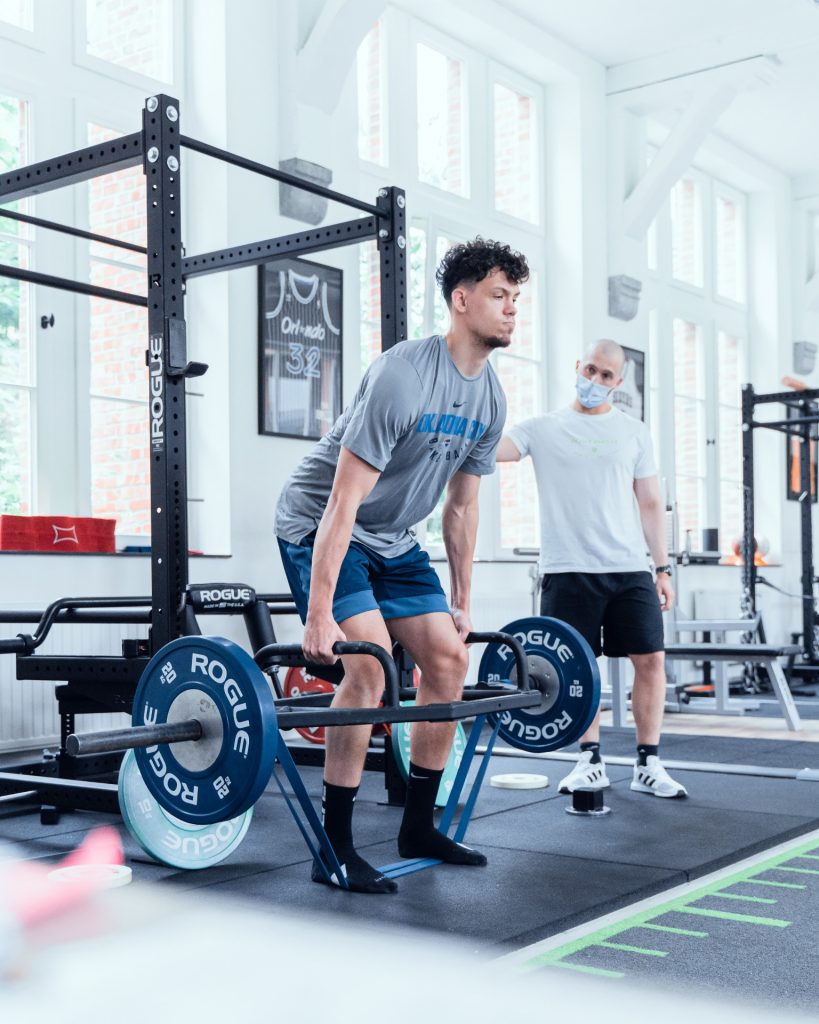One of the main goals of strength training for athletes, in almost all sports, is to be able to develop higher poweroutputs.
Higher power outputs will lead to faster sprinting, higher jumping & being able to change directions more quickly
.
.
These factors influence poweroutput:
.
▶️Maximum dynamic strength

This plays a critical role in the long-term development of power capabilities. Without this baseline development of force generating capacities, as well as morphological & neural adaptations, the athlete will not be able to generate high levels of muscular power. Resistance training is obviously the preferred method.
.
▶️Rate of force development
The ability to develop force in a limited timeframe is crucial. Preferred training methods to influence this factor is through ballistic training & resistance training. Jump squats are a great option here.
.
▶️High-velocity strength
This is the ability to exert force at high contraction velocities.
Resistance training with the emphasis on speed not weight is the way to go here. Examples include lifts that use accomodating resistance or olympic derivatives.
.
▶️Stretch-shortening capabilities
The preferred way to train this factor is through plyometrics. Different variations should be used here (eg fast vs slow plyo’s, intensive vs extensive plyo’s, jumps, hops and bounds etc,…)
.
▶️Neuromusculair skill and co-ordination
Being able to express the elements of explosive power is of tremendous importance. Through simple drills we can improve the inter-muscular and intra-musculair coordination. A great example is teaching wall drills and skips.
.
.
A good strength program should focus on all of these factors and should include the above mentioned training modalities.
